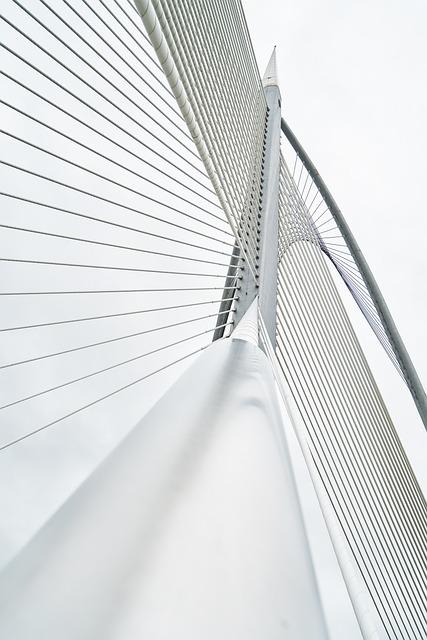In the heart of South Asia, Pakistan stands at a crossroads, where age-old traditions and modern aspirations intertwine. Its infrastructure, a reflection of the nation’s journey, tells a tale of both progress and neglect. As the wheels of time turn, the pressing need to revamp this critical framework has become undeniable. With a burgeoning population and an expanding economy, the challenges facing Pakistan’s infrastructure are as formidable as they are diverse. From crumbling roads and inadequate public transport to unreliable energy grids, each issue presents a unique obstacle to be overcome. Yet, within every challenge lies the seed of opportunity. This article delves into the intricate landscape of Pakistan’s infrastructural woes, exploring not only the hurdles that hinder progress but also the innovative solutions and strategies that promise to pave the way forward. Join us as we embark on a journey through the complexities of renewal, resilience, and the vision of a transformed future for Pakistan.
Assessing the Current State of Pakistans Infrastructure Landscape
The infrastructure landscape of Pakistan is a tapestry woven with both opportunities and challenges. Roads, bridges, and public transport systems reflect the nation’s growth, yet many of these structures are in dire need of upgrades. The rapid urbanization and increasing population exert significant pressure on existing infrastructure, leading to congestion and insufficient services. Key issues include:
- Decaying road networks that hamper trade and mobility.
- Outdated public transportation systems that do not meet the needs of the populace.
- Inadequate energy supplies, affecting both residential and industrial sectors.
- Flood management systems that are often subpar, risking lives and property.
To further understand the current state, an analysis brings to light the disparities across various sectors. The lack of cohesive planning and investment is evident in a comparison of urban and rural infrastructure. A simple overview, presented in the table below, highlights the disparities in key categories:
| Sector | Urban Infrastructure Status | Rural Infrastructure Status |
|---|---|---|
| Transportation | Advanced but congested | Limited access and maintenance |
| Energy | Frequent outages | Severe shortages |
| Healthcare | Better facilities available | Underdeveloped and lacking resources |
| Education | Access to multiple institutions | Limited educational facilities |
This evaluation underscores the urgent need for integrated development strategies that address the shortcomings of both urban and rural settings, ultimately aiming to harness Pakistan’s potential as a thriving economy grounded in robust infrastructure.

Identifying Key Challenges in Transportation and Urban Development
The challenges faced by Pakistan’s transportation and urban development sectors are both multifaceted and deeply intertwined. As cities become more densely populated, issues such as traffic congestion, aged infrastructure, and inefficient public transit systems come to the forefront. A critical factor is the lack of integrated planning, which results in urban sprawl and the proliferation of informal settlements, further straining existing resources. Furthermore, environmental concerns, driven by increasing vehicular emissions and inadequate waste management systems, highlight the urgent need for sustainable urban solutions.
Addressing these challenges requires a comprehensive understanding of the core issues affecting mobility and connectivity. Key are factors like:
- Funding inadequacies for infrastructure projects
- Lack of coordination between governmental agencies
- Outdated technologies that hinder progress
- Public awareness regarding sustainable practices
Innovative strategies such as developing smart transit solutions and improving public-private partnerships could serve as effective solutions. The focus on enhancing walkability and encouraging non-motorized transport can significantly contribute to alleviating urban challenges while promoting a healthier urban environment.

Innovative Solutions for Sustainable Infrastructure Growth
As Pakistan strides towards revitalizing its infrastructure, embracing innovative and sustainable solutions will be crucial. Integrating green building technologies, renewable energy sources, and smart urban planning can lead to enhanced efficiency and reduced environmental impact. Essential strategies include:
- Modular Construction: Streamlining building processes to minimize waste and accelerate project timelines.
- Eco-Friendly Materials: Utilizing sustainable resources to decrease carbon footprints.
- Smart Cities: Implementing IoT technology and data analytics for better resource management and urban services.
Moreover, fostering public-private partnerships can catalyze momentum by pooling resources and expertise for more ambitious projects. A focus on transportation networks, waste management, and water conservation is vital for a holistic approach. Investing in education and training programs will ensure that local talent is equipped to manage and maintain these advancements. A clear vision supported by strategic planning will yield impactful results:
| Sector | Innovative Approach | Expected Outcome |
|---|---|---|
| Transportation | Electric Bus System | Reduced Urban Congestion |
| Waste Management | Zero Waste Initiatives | Cleaner Urban Environments |
| Water Supply | Rainwater Harvesting | Enhanced Water Security |

Collaborative Approaches: Leveraging Public and Private Sector Partnerships
To effectively address the myriad challenges facing Pakistan’s infrastructure, public and private sector partnerships are increasingly seen as a cornerstone for development. These collaborations can harness the strengths of both sectors, fostering innovation, mobilizing resources, and accelerating project delivery. By leveraging private investment alongside government funding, projects can tap into advanced technology and management practices that often enhance efficiency and reduce costs. The incorporation of stakeholder insights ensures that infrastructure projects are not only well-planned but also aligned with the actual needs of the communities they serve.
The successful implementation of such partnerships, however, hinges on establishing a robust framework that promotes transparency and trust. Key strategies include:
- Joint Risk Management: Sharing risks can mitigate concerns and encourage more private entities to participate.
- Clear Regulatory Guidelines: A streamlined process can clarify the roles and responsibilities of each partner.
- Performance-Based Contracts: Incentivizing private partners based on project outcomes ensures accountability.
By fostering an environment conducive to collaboration, Pakistan can revamp its infrastructure while creating a sustainable model for future development, ultimately leading to enhanced economic growth and improved public services.
The Conclusion
As we reflect on the intricate tapestry of Pakistan’s infrastructure, it becomes evident that the road ahead is fraught with challenges but also illuminated by opportunities. Revamping an entire system is no small feat; it requires not only vision but a collective effort that transcends borders, sectors, and generations. By fostering collaboration between government, private enterprises, and communities, we can harness innovative solutions to tackle the pressing issues at hand.
The journey to a resilient and modern infrastructure is a marathon, not a sprint. It calls for patience, strategic planning, and a commitment to sustainable practices that honor both our heritage and our aspirations for the future. As stakeholders come to the table armed with ideas and expertise, we stand at the precipice of potential transformation, where every brick laid and every road paved tells a story of progress.
the true measure of this revamp will not only be the physical structures that rise but also the lives they uplift, the connectivity they foster, and the economic opportunities they unlock. As Pakistan strides forward, may we embrace both the challenges and solutions with a spirit of resilience and innovation, ensuring that the infrastructure we build today paves the way for a brighter tomorrow.



